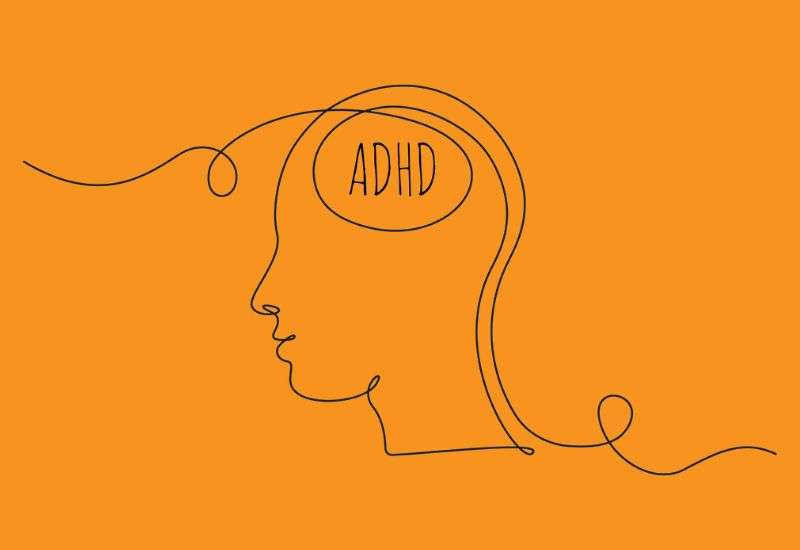In the spirit of our last few discussions, we wanted to zoom in on Attention-Deficit/Hyperactivity Disorder. ADHD is a vastly misunderstood condition, that (like OCD, which we explored on our blog) has made its way into popular culture in ways that can be very problematic.
This look at ADHD is particularly timely, as October is ADHD Awareness Month. This awareness project was created to “educate the public about ADHD by disseminating reliable information based on the evidence of science and peer-reviewed research.” And this reliable information from the ADHD Awareness Month Coalition begins with the statement that “no two people with ADHD are alike.”
The need for an awareness event, the Coalition explains, stems from the idea that “ADHD is one of the most common mental health conditions affecting children and adults. But it is often misunderstood. ADHD Awareness Month’s goal is to correct these misunderstandings and highlight the shared experiences of the ADHD community.”
Our discussion is made even more resonant by a nationwide shortage of Adderall, one of the most widely prescribed medications for ADHD. With a narrowing of treatment options, and well-documented stigmatization of both ADHD and ADHD medications, we felt it a good time for a chat.
What is ADHD?
Attention-Deficit/Hyperactivity Disorder is not a mental illness, per se. That is to say, it’s not a primary diagnosis that we directly treat at Galen Hope. Rather, it is a condition that we can help clients learn to cope with and better manage, and it’s a condition that we can help accommodate.
Technically speaking, ADHD is a neurodevelopmental disorder. The DSM-5 explains that it is characterized by a “persistent pattern of inattention and/or hyperactivity-impulsivity that interferes with functioning or development.”
As the description implies, there is more than one presentation of ADHD. Depending on the specific symptoms that a person may experience, they may be diagnosed with one of three primary types of ADHD:
Predominantly Hyperactive-Impulsive Presentation:
Probably the most fabled presentation of Attention-Deficit/Hyperactivity Disorder, the predominantly hyperactive presentation is characterized by “an unusually high level of activity or excitement.” With this type of ADHD, an individual will display symptoms that include
- Fidgeting with hands or feet
- Squirming in chair
- Feeling restless
- Running or climbing at inappropriate times
- Talking excessively
- Blurting out answers
Predominantly Inattentive Presentation:
A person with inattentive presentation of ADHD may not appear hyperactive at all. Here, the DSM-5 says, inattentive behavior is characterized by “not being able to carefully complete a task, pay attention, think about, listen to, or watch someone or something.”
Combined presentation:
And to make ADHD even more complex, an individual may have a combination of these types that can favor one presentation or the other.
Myths about ADHD
As we mentioned above, Attention-Deficit/Hyperactivity Disorder is not well understood culturally. There are a number of persistent myths that have attached themselves to ADHD. Let’s take them apart.
ADHD only affects children
When knowledge of ADHD was first emerging, it was widely thought that it was a condition that occurred only in children. There was a pervasive belief that a person would grow out of the disorder. In fact, until recently language to that effect was present in diagnostic manuals.
Our understanding of ADHD has shifted. Children and Adults with Attention-Deficit/Hyperactivity Disorder (CHADD) tells us:
Long-term studies of children diagnosed with ADHD show that ADHD is a lifespan disorder. Recent follow-up studies of children with ADHD show that ADHD persists from childhood to adolescence in 50%–80% of cases, and into adulthood in 35%–65% of cases (Owens et al. 2015).
______
A 16-year follow-up study of boys diagnosed with ADHD found that 77% continued to have full or subthreshold DSM-IV ADHD (Biederman et al. 2012). A study of girls ages 6–12 years with childhood ADHD found that 10 years later, they continued to have higher rates of ADHD and coexisting conditions, including higher rates of suicide attempts and self-injury, compared to girls without ADHD (Hinshaw et al. 2012).
______
The newest version of the DSM (DSM-5) includes corrected language and diagnostic criteria for adults. In fact, an adult may need to meet fewer criteria for diagnosis than a child.
ADHD means that someone is bouncing off the walls
Not everyone with ADHD has symptoms of hyperactivity. While anyone with ADHD may present as primarily inattentive, VerywellHealth explains “Girls and women tend to show more inattentive symptoms than hyperactivity/impulsivity. They are also more likely to present with internalizing symptoms than externalizing. Because these symptoms are less disruptive and don’t fit the ADHD stereotype, ADHD is often missed in girls.”
This presentation is also common in adults of every gender.
Those with ADHD can’t pay attention to anything
Many people with ADHD, and even the inattentive presentation, can pay close attention to things and be highly detail oriented. ADHD Coaches Inc. says, “People with ADHD can concentrate when they are interested in or intrigued by what they are doing.”
In fact, it’s common for those with ADHD to enter into a state known as “hyperfocus.” In a journal article from 2013, Ozel-Kizil (et al) says that:
______
Hyperfocusing, which is characterized by an intensive concentration on interesting and non-routine activities accompanied by a temporarily diminished perception of the environment, is a clinically well-known phenomenon in patients with attention deficit and hyperactivity disorder. It is also described as ‘locking on’ to some task.
______
Those with ADHD cannot be good students or workers
One of the most insidious myths about ADHD is that it means that a person cannot do well in school or have a successful career. In truth, in most cases, ADHD is a manageable disorder. With proper understanding, knowledge of coping and management mechanisms, and (when appropriate) medication, a person with ADHD can be very successful in school, work, and life.
THE ROAD TO WELLNESS STARTS BY SEEKING HELP. TODAY.
Built on the principles of assertive community treatment, Galen Hope is an eating disorder and mental health treatment center offering individualized treatment options that include Intensive Outpatient (IOP) and Partial Hospitalization Programs (PHP). As a “Community of Integrated Wellness,” we pride ourselves in fostering a thoughtful and meaningful care experience that can guide our clients on their road to recovery and increased quality of life, regardless of diagnosis. Galen Hope currently offers separate, age-specific programming for female and transfeminine adolescents ages 12-17 and adults 18 and up, as well as gender-specific programming for males and transmasculine individuals with eating disorders and primary mental health diagnoses.
To learn more, or to join our community for integrated wellness, please contact us today.
Belong. Heal. Grow.
At Galen Hope, we are dedicated to profoundly improving the lives of adolescents, adults, and families facing a wide range of challenges, including primary mental health conditions and eating disorders. Whether you’re struggling with anxiety, depression, OCD, trauma, or disordered eating, we provide thoughtful, individualized care rooted in compassion. With two conveniently located mental health and eating disorder treatment centers in Florida, Galen Hope proudly serves clients from across the United States and beyond.

